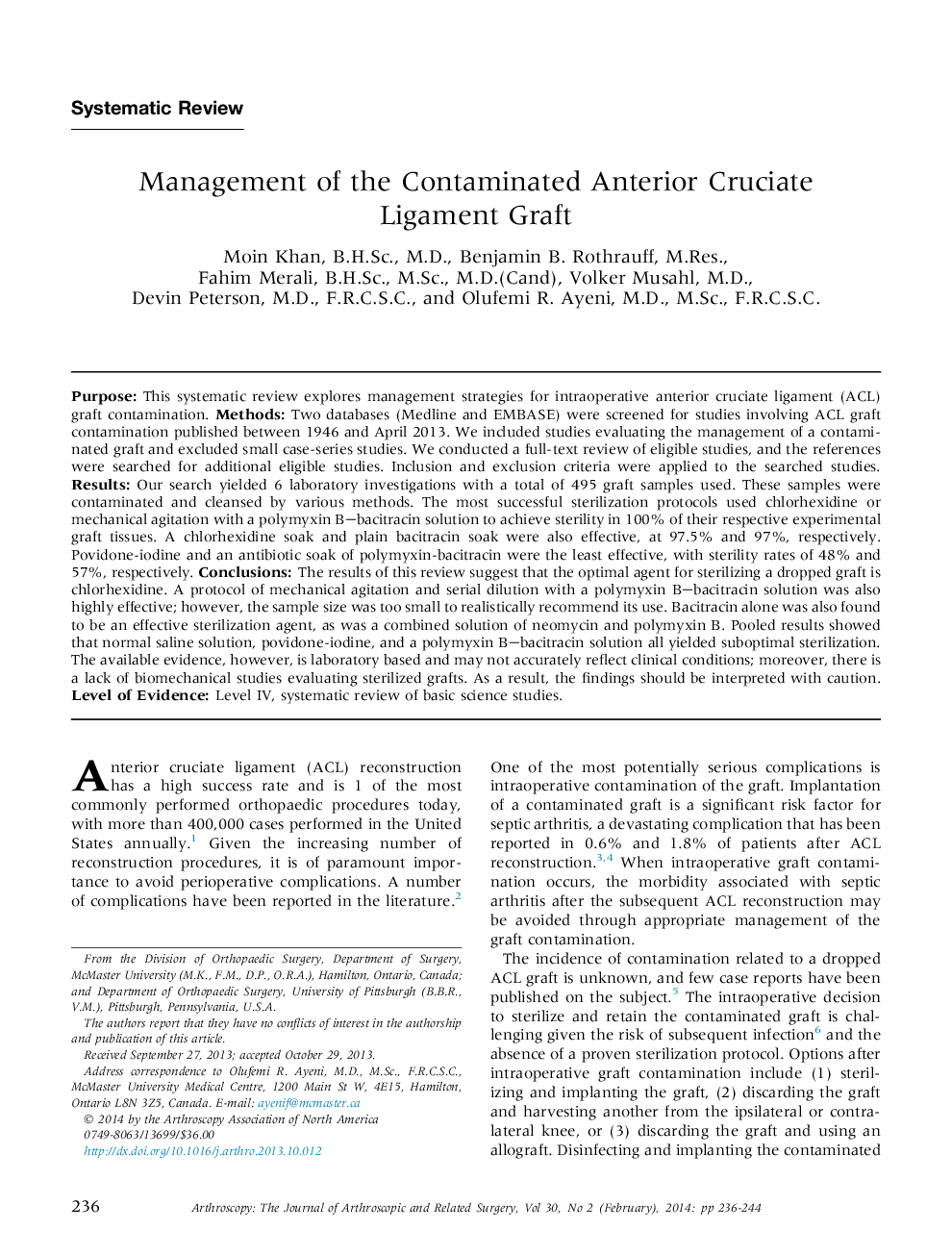| کد مقاله | کد نشریه | سال انتشار | مقاله انگلیسی | نسخه تمام متن |
|---|---|---|---|---|
| 4043086 | 1603500 | 2014 | 9 صفحه PDF | دانلود رایگان |
PurposeThis systematic review explores management strategies for intraoperative anterior cruciate ligament (ACL) graft contamination.MethodsTwo databases (Medline and EMBASE) were screened for studies involving ACL graft contamination published between 1946 and April 2013. We included studies evaluating the management of a contaminated graft and excluded small case-series studies. We conducted a full-text review of eligible studies, and the references were searched for additional eligible studies. Inclusion and exclusion criteria were applied to the searched studies.ResultsOur search yielded 6 laboratory investigations with a total of 495 graft samples used. These samples were contaminated and cleansed by various methods. The most successful sterilization protocols used chlorhexidine or mechanical agitation with a polymyxin B–bacitracin solution to achieve sterility in 100% of their respective experimental graft tissues. A chlorhexidine soak and plain bacitracin soak were also effective, at 97.5% and 97%, respectively. Povidone-iodine and an antibiotic soak of polymyxin-bacitracin were the least effective, with sterility rates of 48% and 57%, respectively.ConclusionsThe results of this review suggest that the optimal agent for sterilizing a dropped graft is chlorhexidine. A protocol of mechanical agitation and serial dilution with a polymyxin B–bacitracin solution was also highly effective; however, the sample size was too small to realistically recommend its use. Bacitracin alone was also found to be an effective sterilization agent, as was a combined solution of neomycin and polymyxin B. Pooled results showed that normal saline solution, povidone-iodine, and a polymyxin B–bacitracin solution all yielded suboptimal sterilization. The available evidence, however, is laboratory based and may not accurately reflect clinical conditions; moreover, there is a lack of biomechanical studies evaluating sterilized grafts. As a result, the findings should be interpreted with caution.Level of EvidenceLevel IV, systematic review of basic science studies.
Journal: Arthroscopy: The Journal of Arthroscopic & Related Surgery - Volume 30, Issue 2, February 2014, Pages 236–244
